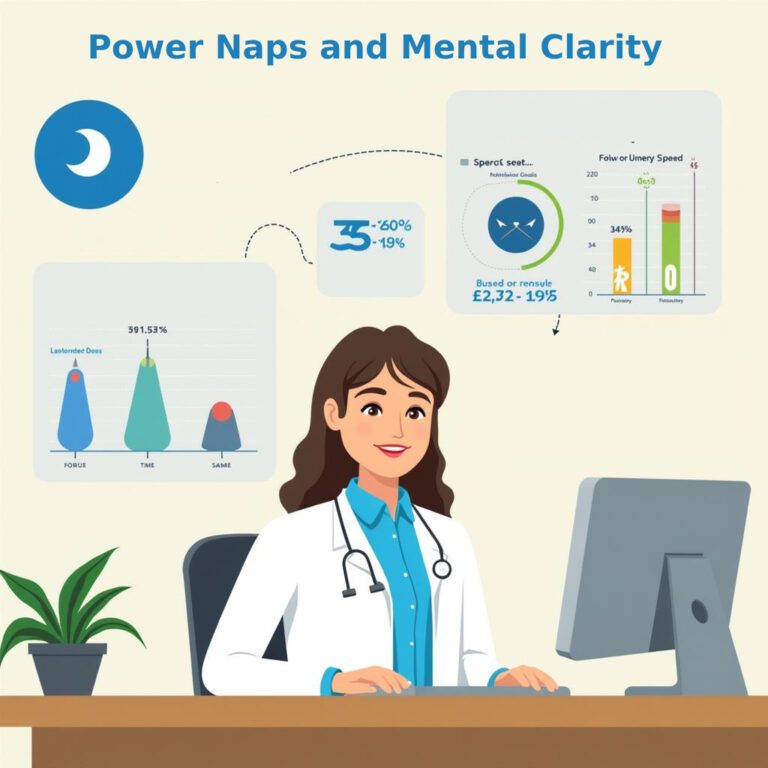In our fast-paced world, the importance of sleep, particularly napping, cannot be overstated when it comes to enhancing productivity. A well-structured nap schedule can significantly recharge our energy and mental acuity. This article explores the best nap schedule for productivity to help you maximize your efficiency and focus throughout the day.
Understanding the Power of Naps
Before diving into the best nap schedules, it’s essential to understand the physiological benefits of napping. Naps can help alleviate fatigue, improve mood, and boost cognitive performance. Research suggests that a short nap can lead to increased alertness and enhanced problem-solving skills. However, timing and duration are key to reaping these benefits without experiencing sleep inertia—the grogginess that sometimes follows waking from a nap.
The Science Behind Napping
Napping has been shown to improve performance, learning, and memory. According to sleep research, there are several types of naps, categorized by their duration:
- Power Nap (10-20 minutes): Ideal for a quick energy boost, this short nap prevents sleep inertia while giving you just enough rest.
- Short Nap (30 minutes): This duration may result in some grogginess but can be great for creative problem-solving.
- Long Nap (60-90 minutes): This duration allows for a full sleep cycle, including deep sleep, which can improve memory consolidation and learning.
Understanding these nap types will help you tailor your nap schedule based on your productivity needs.
Creating the Best Nap Schedule for Productivity
Now that we understand the benefits of napping, let’s dive into crafting the best nap schedule to enhance productivity.
Identify Your Most Productive Hours
The first step is to determine your peak productivity hours. Are you an early bird or a night owl? Most people experience a natural dip in energy levels in the early afternoon, commonly known as the post-lunch dip. Timing your naps around this period can significantly boost your afternoon productivity.
Ideal Nap Times
For maximum effectiveness, the timing of your naps matters. Here are a few strategies:
- If you wake up early: Consider a power nap around 1 PM to 2 PM. This helps recharge your energy for the second half of the day.
- For a traditional 9-5 worker: Schedule a short 20-minute nap at around 1:30 PM, right after lunch to counteract the post-lunch slump.
- A longer nap for those who need more recovery: After a particularly challenging morning, a 60-90 minute nap around 2 PM can provide healing restorative sleep that strengthens cognitive function.
Listen to Your Body
While the above suggestions offer a framework, personal adjustment is crucial. Pay attention to how your body reacts to napping at different times and adjust your schedule accordingly. Consistency is also essential. Try to nap at the same time every day so that your body can adjust and recognize when it’s time to rest.
Not Just About Timing: The Perfect Nap Environment
Creating a conducive nap environment is equally critical for reaping the benefits of your nap. Consider the following factors:
- Darkness: A dark room signals your body that it’s time to rest. Use eye masks if you’re in a bright area.
- Quiet: Find a quiet space or use noise-canceling headphones or white noise devices to block out distractions.
- Comfort: Make sure your sleeping arrangement is comfortable—whether it’s a cozy chair, a sofa, or a bed.
Combining Naps with Overall Sleep Hygiene
It’s important to remember that napping should supplement a healthy sleep schedule. Here are some tips for improving overall sleep hygiene:
- Maintain a Regular Sleep Schedule: Aim to go to bed and wake up at the same time each day to regulate your body clock.
- Limit Screen Time Before Bed: Blue light emitted by screens can interfere with melatonin production. Consider reducing screen exposure at least an hour before bedtime.
- Establish a Relaxing Bedtime Routine: Activities such as reading, taking a warm bath, or practicing mindfulness can prepare your body for a restful night.
When to Avoid Napping
Although napping has numerous benefits, it’s not suitable for everyone or every situation. Here are some circumstances where you might want to skip the nap:
- Insomnia or Sleep Disorders: If you have trouble sleeping at night, napping may exacerbate the problem.
- Close to Bedtime: Avoid napping late in the day as it can interfere with your night-time sleep.
Final Thoughts on the Best Nap Schedule for Productivity
Finding the best nap schedule for productivity involves understanding your unique body rhythms and preferences. By identifying your peak productivity times, timing your naps effectively, and creating an ideal napping environment, you can harness the full power of napping to enhance your productivity. Remember to integrate naps with a healthy sleep routine for optimal results. Ultimately, listening to your body and adjusting will lead to the most fulfilling and energizing nap experience, preparing you to tackle the day’s challenges with renewed vigor.







